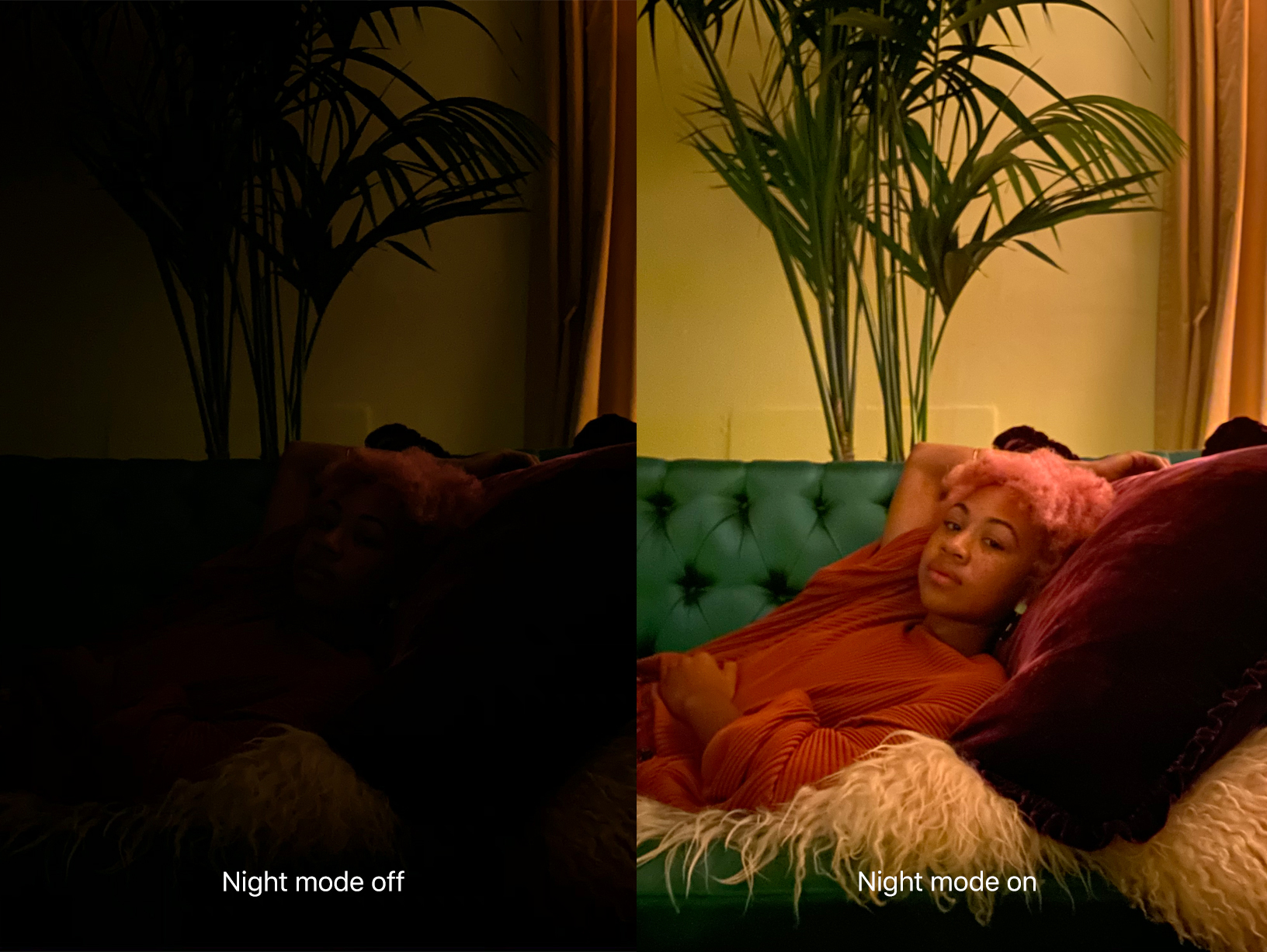The iPhone 11 is the base model this time around – the successor to the iPhone Xr. It packs the same 6.1-inch screen size, comes in 6 colors, and includes Dolby Atmos-tuned stereo speakers. It features a dual camera; notably, the second camera uses an ultra-wide lens as opposed to a telephoto lens as in past devices.
Apple focused most of the iPhone 11 segment on the camera. The company introduced several software improvements, including the ability to take pet portraits, a high-key monochrome mode, and a proper Night Mode to compete with Google. Apple says its new low-light feature will use AI to automatically brighten photos and reduce noise. We’ll have to see how it compares to the upcoming Pixel 4 later this year – a phone we expect to be able to take proper pictures of the stars. There are further improvements in video front. Apple says it has the “highest-quality video ever in a smartphone,” showing off a clip with impressive dynamic range, although it didn’t go into specifics about how video quality has been improved. You can switch between the main camera and wide-angle camera on the fly during recording though, which is nice. You can also now capture video simply by holding down the shutter button, so you needn’t waste time switching modes. The front camera has also been improved, able to capture slow-motion video as well as 4K footage at up to 60fps. Apple says image quality will improve further when it launches its ‘Deep Fusion’ processing later this fall. The technology uses on-device machine learning to perform ‘pixel-by-pixel’ processing in order to improve the texture, detail, and noise of photos. The Phone is powered by an A13 Bionic chip, which Apple says gives the iPhone 11 family the most powerful processor and GPU on the market – 20 percent faster on both fronts than the A12. The more efficient processor also means an hour longer of battery life. As with previous iPhones, the iPhone 11 is IP68 resistant, and Apple is using tougher glass with a matte finish this time around. It’s worth noting that by calling the cheapest model the ‘iPhone 11,’ Apple is somewhat repositioning its devices. The Xr was seen as a “low-end” variant to the mainstream iPhone Xs. This time around, the iPhone 11 appears to be the mainstream model; the Pros are just for those that really want the extra battery life and camera chops. It makes sense too; the Xr was the most popular iPhone of the previous generation – Apple says the best-selling phone in the world. It’s reasonable Apple might want to place an emphasis on the most affordable new iPhone. The iPhone 11 will start at $699 for the 64GB model, and will officially be available on September 20. Pre-orders begin this Friday, September 13. For more on everything Apple announced today, check out our event page here.

